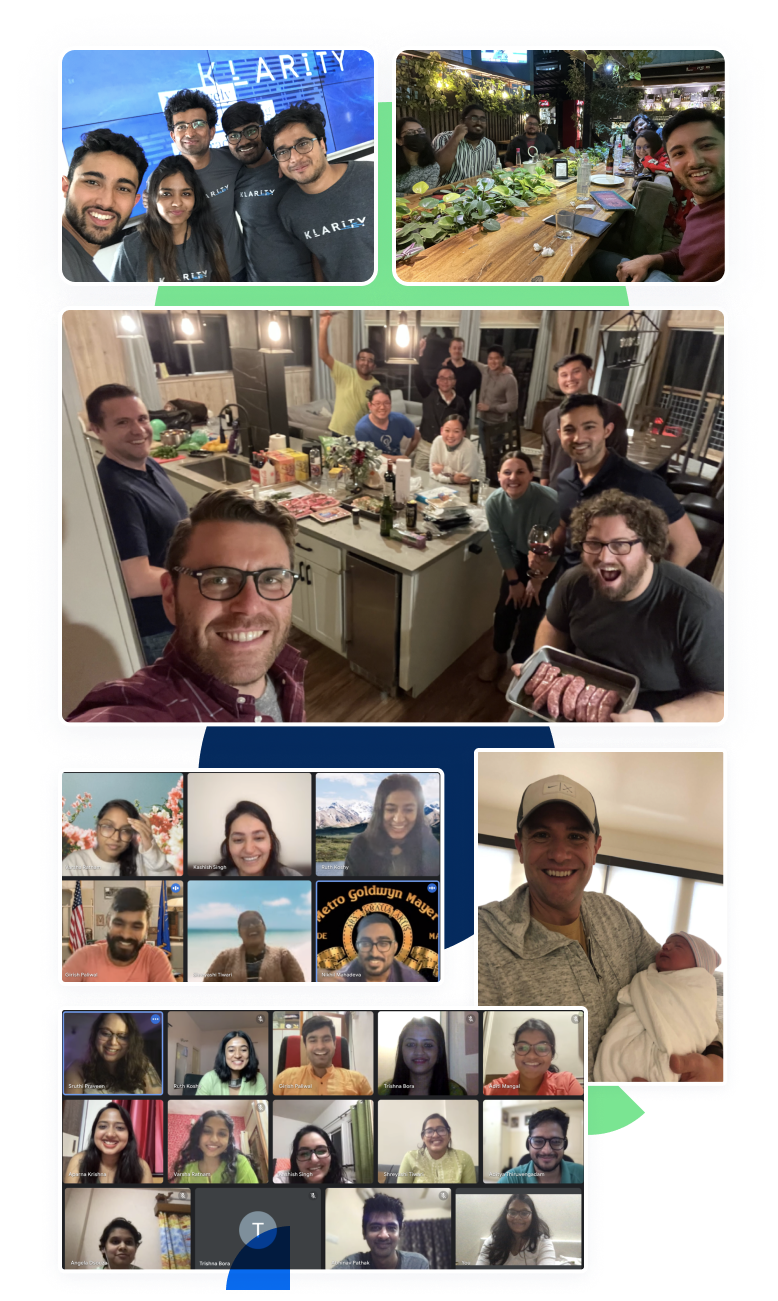How Klarity Works:
Automate Workflows
A few weeks ago our co-founder, Nischal, wrote about the five value pillars on which Klarity is built. The first and most foundational is the unique way in which our technology automates the standard revenue recognition workflows we see across every industry. What’s special about Klarity is that we don’t just simplify your workflow, we remove entire pieces through cutting edge automation.
How Klarity Works:
Automate Workflows
A few weeks ago our co-founder, Nischal, wrote about the five value pillars on which Klarity is built. The first and most foundational is the unique way in which our technology automates the standard revenue recognition workflows we see across every industry. What’s special about Klarity is that we don’t just simplify your workflow, we remove entire pieces through cutting edge automation.
How Klarity Works:
Automate Workflows
A few weeks ago our co-founder, Nischal, wrote about the five value pillars on which Klarity is built. The first and most foundational is the unique way in which our technology automates the standard revenue recognition workflows we see across every industry. What’s special about Klarity is that we don’t just simplify your workflow, we remove entire pieces through cutting edge automation.
Don't have time now? Download it.
Why customers choose Klarity
The reality of Revenue Recognition today
Nearly every company we talk to has the exact same account process after closing a sale. They finalize the terms, the legal team drops the signed contract into Salesforce, and the opportunity is marked as Closed/Won. From there, it’s the revenue team’s responsibility to conduct a weekly or monthly review and check for Closed/Won opportunities that exceed a predetermined materiality threshold. The tools available for creating and filtering these reports are rarely more sophisticated than an Excel spreadsheet.
Highly trained revenue accountants spend their days manually extracting relevant metadata, identifying non-standard terms that could impact their financials and filling out yet another spreadsheet. It’s repetitive, high-level information like the name of the customer, or the close date and dollar amount of the deal. Because it’s all done manually, the potential for error is high. The process requires multiple levels of review from increasingly senior accounting pros, and interpretations across reviewers may be different.
Why Customers Love It
“We are extremely excited to implement this Generative AI Technology for our customers. Klarity Architect demonstrates the superior analysis capabilities of AI using Multi Modal analysis and LLMs in real life scenarios. We believe in the impactful transformative value of AI and look forward to delivering tangible results to our customers by utilizing Klarity Architect.”
— Ahmed Zaidi, CEO, Accelirate
Find out how Accelirate cut documentation time by 67% and scaled their operations →
Life at Klarity


How we help
Klarity automatically identifies which contracts exceed your organization’s materiality threshold and require human review, and automatically conducts a standard review for contracts under the threshold. The system allocates those contracts to team members and notifies them when a contract enters their queue. The reviewer then simply accesses the Klarity system, where all of the relevant documents are already stored. Klarity reads and understands those documents the same way a human reviewer would, and automatically pre-populates your review checklist. This frees up the reviewer to simply sift through the relevant information and any flagged items, then record their accounting conclusions. That information is all still there for the second review cycle or any future audit that may be conducted. When level one review is marked done, the level two reviewer is automatically notified.
Klarity also becomes the system of record for contract review by including a history of notes, questions and clarifications conducted between reviewers. It’s a one stop shop for second level and audit review.
Just like that, a process of literally dozens of repeated steps is condensed down to a manageable few.
.gif)


